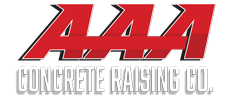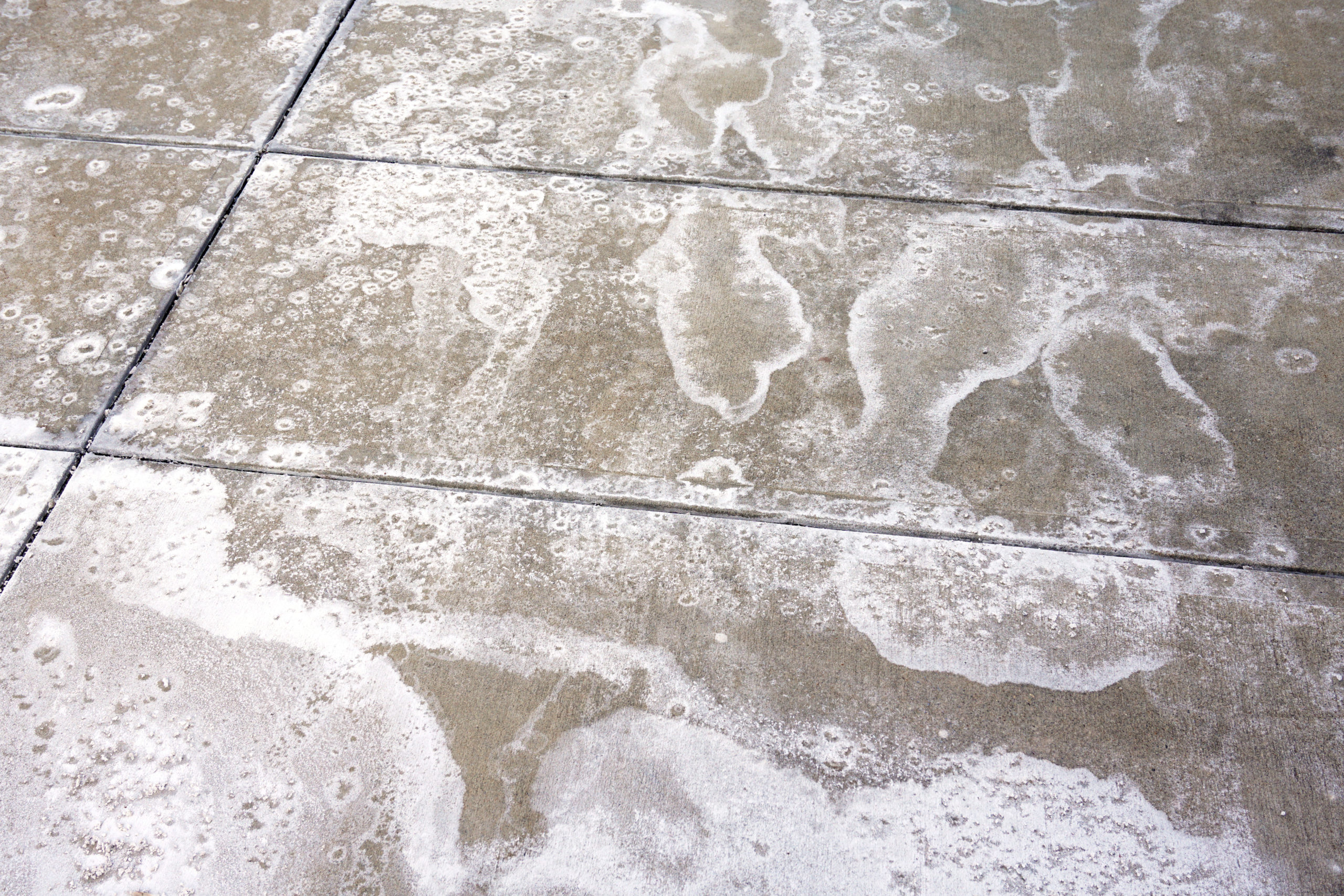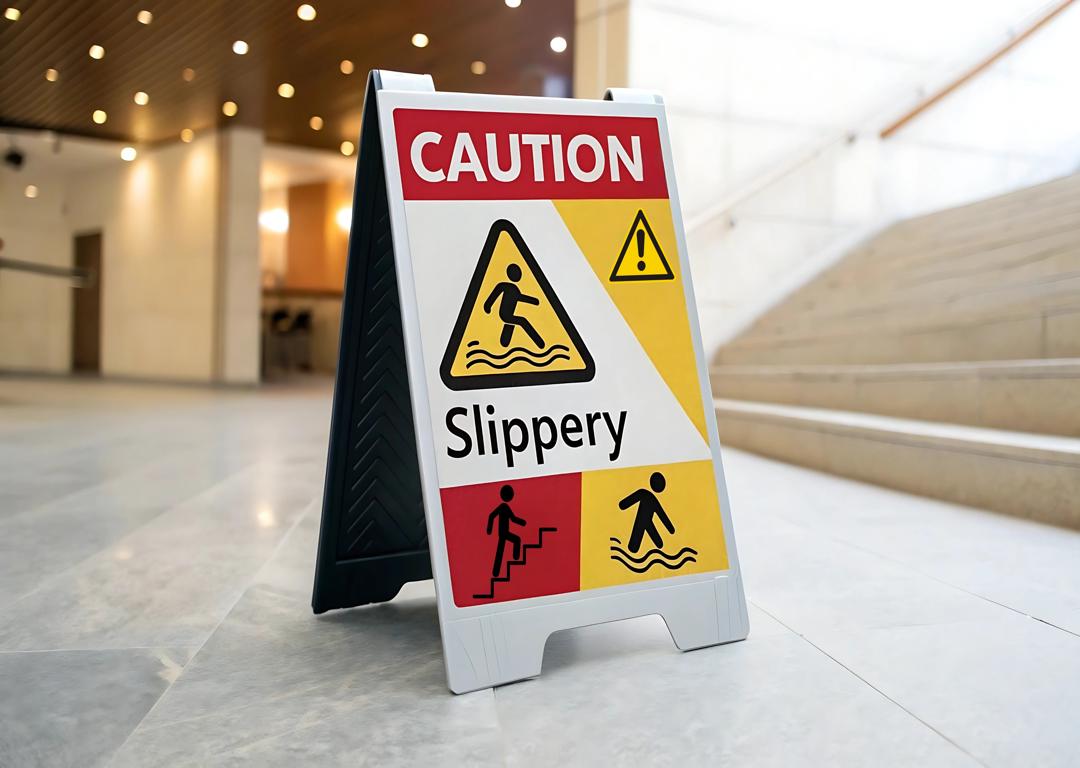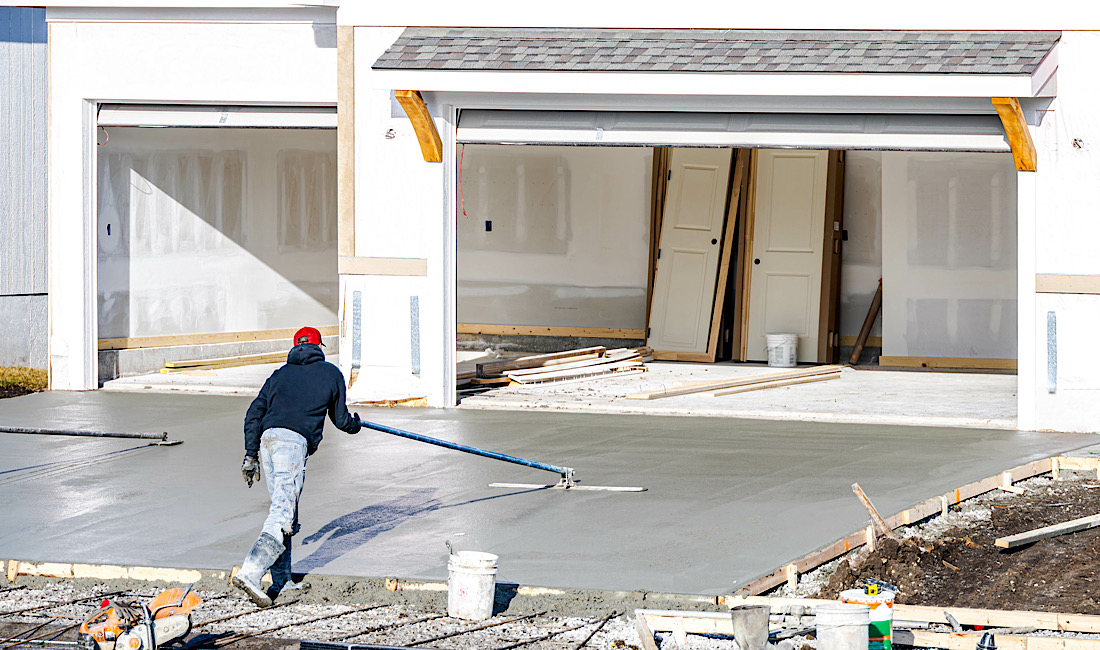The traditional remedy for icy walkways, salt can kill grass, damage soil and shorten the lifespan of your driveway. It’s also toxic to pets and leads to the over-salinization of rivers and lakes. Here are some effective alternatives to help you thaw your frozen concrete surfaces and prevent dangerous falls.
Calcium Magnesium Acetate (CMA)
A relatively new, salt-free melting agent, calcium magnesium acetate does not form any sort of brine-like salt. Instead, it inhibits snow molecules from binding to each other or the underlying concrete surface. Made from acetic acid and dolomitic limestone, CMA has little to no impact on animals and vegetation. It’s also biodegradable and won’t damage concrete or brick surfaces.
Urea (carbonyl diamide)
An ingredient in fertilizer, urea is a non-salt-based option that’s both environmentally safe and harmless to concrete. Often used on frozen airport runways, it is safe for pets. In fact, the ASPCA Animal Poison Control Center recommends urea-based products as the gentlest on paws and least likely to cause fatal poisoning.
Epsom Salt
This de-icing option is a safer choice for homeowners who are concerned about their grass and landscaping vegetation. In fact, you may already use it as fertilizer in your garden. It melts ice well and has abrasive qualities that promote better traction. You can even increase its melting power by adding sugar in a one-to-one ratio.
Natural Fertilizer
Whether it’s coffee grounds, wood ashes or alfalfa meal, natural fertilizers are much safer than salt. Alfalfa meal, for instance, is an effective non-chemical fertilizer that won’t burn the roots of your plants. Wood ash from a fireplace also contains potassium salts that melt ice. The dark-colored ash can also absorb solar energy, increasing surface temperature to help melt ice. Each option is abrasive enough to improve traction without harming your concrete.
Rubbing Alcohol
Since rubbing alcohol has a lower freezing point than water, it thaws ice and helps to prevent re-icing. While it may not seem like an affordable option, you can dilute the alcohol by adding water without diminishing its ability to melt ice. In fact, rubbing alcohol is a common ingredient in many commercial ice melts. And quite often, rubbing alcohol is used to defrost the wings of airplanes.
Sand or Litter
If you’d prefer to avoid chemicals but want to make your sidewalks safer, simply cover the ice with sand or cat litter. While it won’t melt the ice, it can significantly improve traction and reduce the risk of serious falls. It does get a bit messy, however, so you will need to take extra steps to make sure you and your family doesn’t track the material into the house. Still, it is an easy, cost-effective way to make your concrete surfaces more walkable in the winter without damaging your grass, porch, sidewalks or driveway.
Has your driveway seen better days? Whether the concrete is sinking or cracked, AAA Concrete Raising can restore its function and aesthetic appeal using cost-friendly mudjacking techniques.
AAA Concrete Raising has served Colorado homeowners and businesses for more than two full decades. Our innovative concrete raising company uses modern equipment that eliminates the need for any sort of noisy, awkward machinery. This ensures a speedy, neat, and efficient job that won’t disrupt the neighborhood. Contact our team for all your concrete restoration needs.





